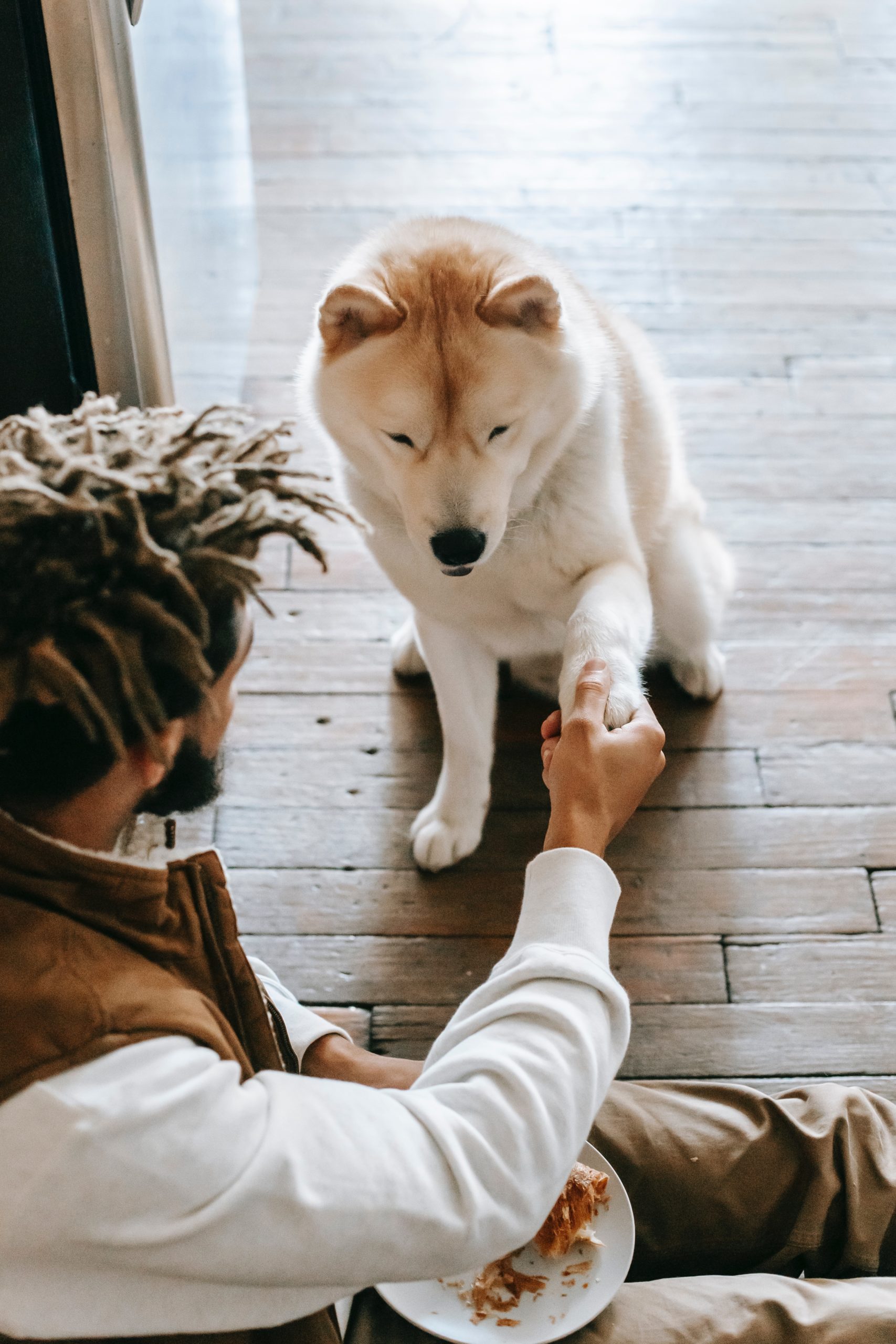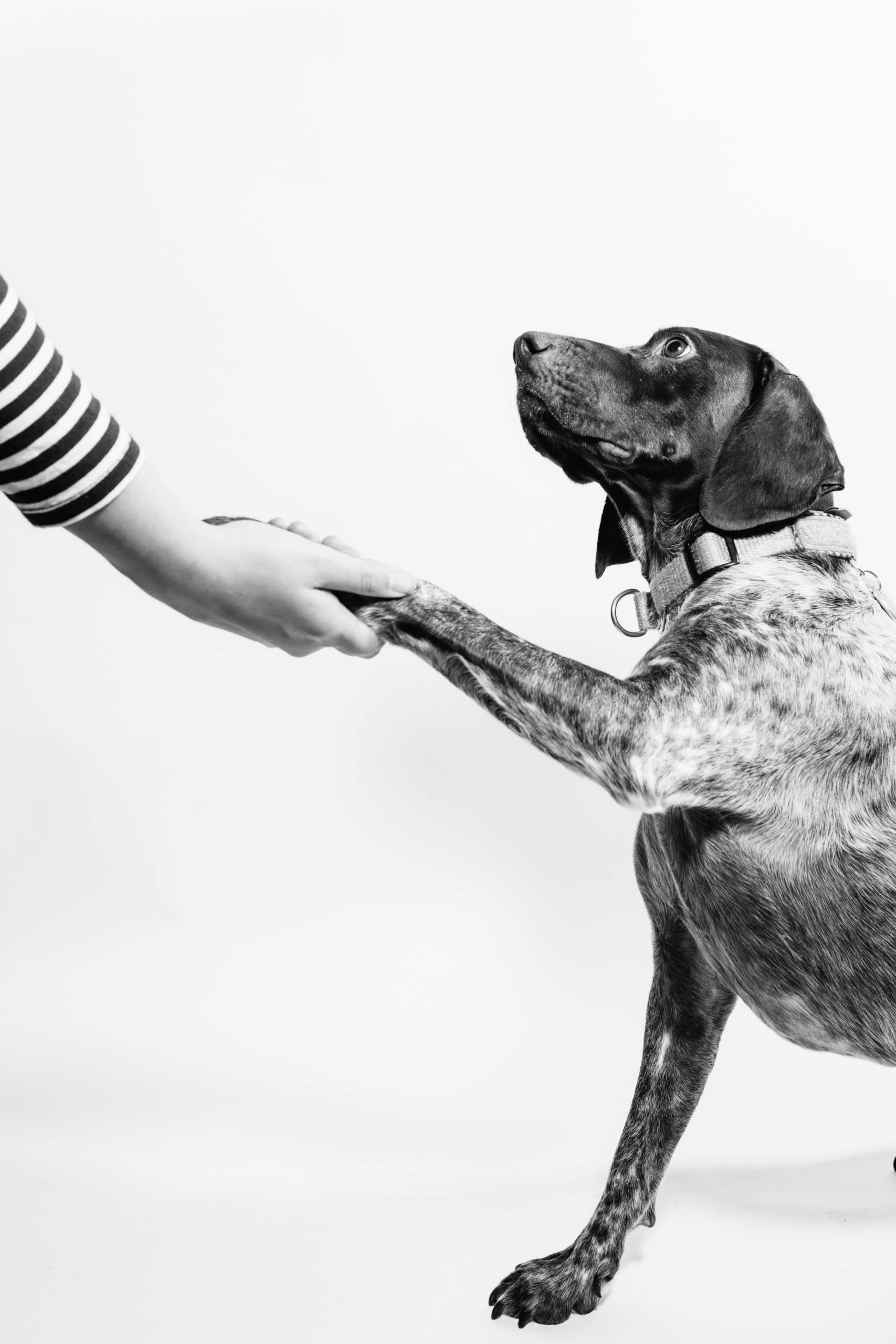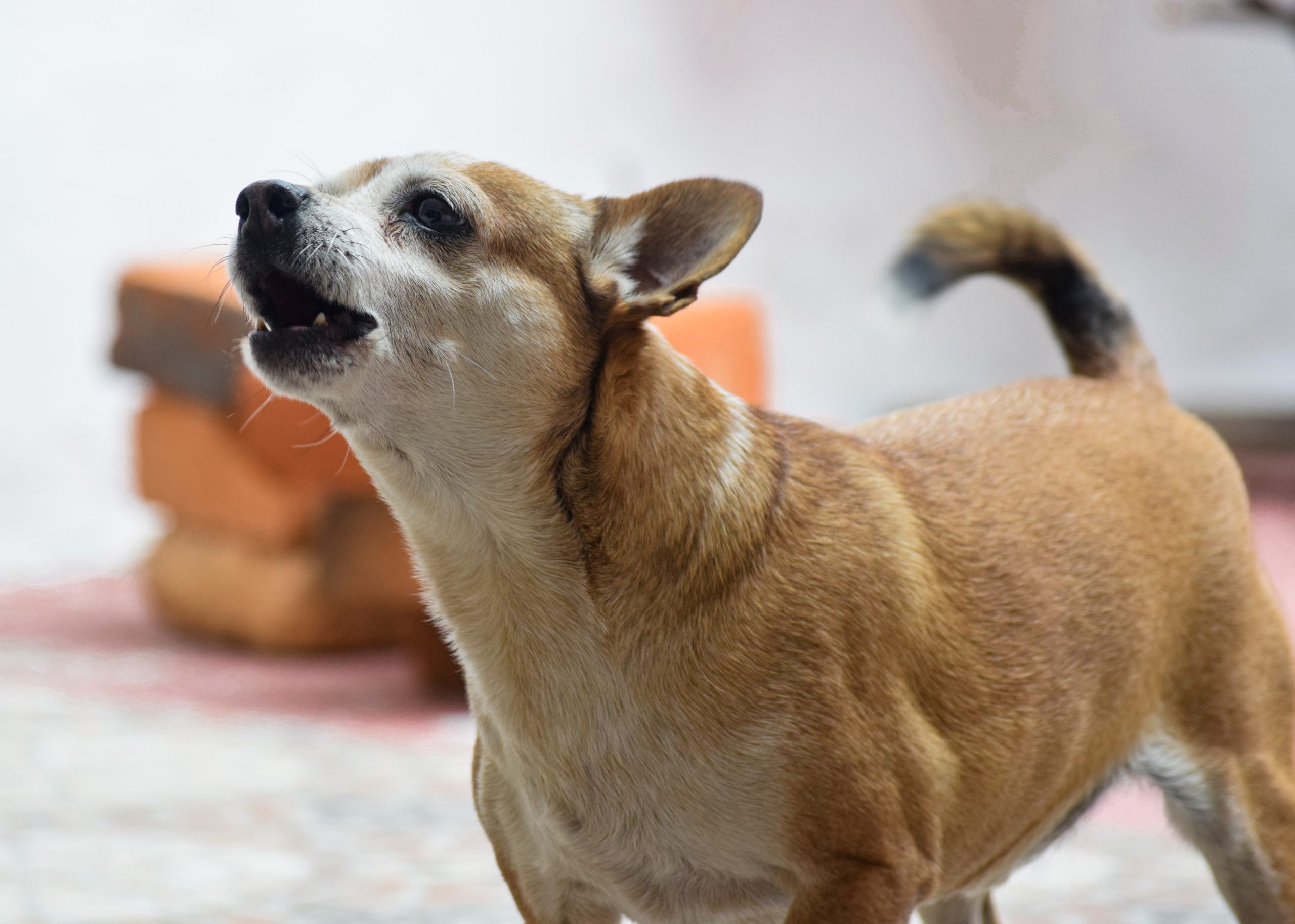Training a new puppy can be both rewarding and challenging, even for the most experienced dog owners. Puppy obedience training serves as a cornerstone in establishing trust, good behavior, and strengthening the bond between you and your furry friend.
In this blog, we’ll explore basic to advanced obedience training techniques that will help ensure your pup develops into a well-mannered, confident companion.
From housebreaking tips to proper socialization practices, our guide covers all aspects of effective puppy training.
Basic Puppy Obedience Training
Housebreaking is an essential part of basic puppy obedience training that involves teaching the pup to relieve itself outside, using positive reinforcement techniques.
Importance Of Housebreaking
Housebreaking is an essential aspect of puppy obedience training that creates a solid foundation for good behavior and habits in your furry friend.
Consistency, patience, and positive reinforcement play critical roles in successful housebreaking. For instance, establish a routine where your pup goes outside after every meal or nap to minimize the chances of accidents indoors.
Moreover, remember to reward your pet with praise or treats whenever they successfully eliminate outside. This encourages them to associate outdoor elimination with positive experiences, making it more likely that they will continue this good behavior as they grow older while building trust between you two at the same time.
Inadequate housebreaking could cause unnecessary stress for both yourself and the dog later down the line when trying to correct their tendencies well into adulthood.
Basic Commands Such As Sit, Stay, And Come
Basic obedience training is essential for your puppy to understand commands and develop good behavior. Here are some of the basic commands you can teach your puppy:
- Sit: This is one of the easiest commands to teach your puppy. Hold a treat close to their nose, and then move it up so that their head follows the treat. As their head moves up, their butt will naturally go down. Once they sit, reward them with the treat.
- Stay: Teach your puppy to stay in a particular place until you give them permission to leave. Command them to sit, and then hold out your hand and say “stay” while taking a step back. If they stay in place, reward them with praise or a treat.
- Come: This command should be taught after your puppy has mastered sitting and staying. Start by saying “come” while gently tugging on their leash towards you. When they come towards you, reward them with affection or a treat.
Remember that puppies have short attention spans and may need frequent breaks during training sessions. Be patient and consistent with your commands, using positive reinforcement techniques such as treats or praise. Following these simple steps will help establish good behavior in your puppy from an early age.
Walking On A Leash
Leash training is a key aspect of puppy obedience training. The goal is to teach your dog not to pull on the leash and to walk calmly beside you. Start by using a well-fitted collar or harness, paired with a 4-6 ft leash.
Begin walking at a slow pace in an area without many distractions, encouraging your puppy with treats and praise when they stay close to you.
It’s important always to be patient during this process; don’t yank the leash back or scold your pup if they get distracted and start pulling again. Gradually introduce more challenging environments such as busy sidewalks or parks once your puppy has mastered the basics of staying by your side while walking on a leash.
Crate Training
Crate training is a valuable tool for puppy obedience training. It involves having your dog spend time in a crate or kennel, which can provide a safe and comfortable space where they feel secure.
This type of training is helpful in-house breaking puppies because they will learn to hold their bladder and bowels until you take them outside. Additionally, it can help keep your pup out of trouble when you’re unable to supervise them around the house.
It’s important to note that crates shouldn’t be used as punishment. Dogs should never be forced into the crate or left alone in there for too long without bathroom breaks or human interaction.
The goal of using the crate is to teach proper behaviors such as separation anxiety control and proper chewing habits while avoiding bad ones like peeing on carpets when unsupervised.
Advanced Puppy Obedience Training
Advanced puppy obedience training involves establishing boundaries and teaching advanced commands while socializing your dog with other dogs and people using positive reinforcement techniques.
Establishing Boundaries And Rules
Establishing boundaries and rules is a crucial component of puppy obedience training. Dogs need to understand what behaviors are acceptable and which ones will not be tolerated.
One way to establish boundaries is by using visual cues such as placing physical barriers around areas that are off-limits for your furry friend. For instance, if you do not want your dog in certain parts of the house, use baby gates or close doors to block access.
Additionally, consider setting limits on how much attention you give them or where they can sleep at night.
Teaching Advanced Commands
Teaching advanced commands to your puppy is an essential part of obedience training. Here are some tips to help you teach your pup:
- Start with the basics: Before moving on to advanced commands, ensure that your pup has mastered basic ones such as sit, stay, and come.
- Use positive reinforcement: Positive reinforcement techniques such as treats and praise encourage good behavior.
- Be consistent: Consistency in training is crucial for your pup’s understanding of the command.
- Introduce one command at a time: Do not overwhelm your puppy by introducing too many advanced commands at once.
- Practice regularly: Repetition is key when teaching your dog new commands, so practice regularly.
- Work on duration and distance: Once your pup understands the command, work on increasing the duration they can hold it and the distance from which you give the command.
- Be patient: Dogs learn at different rates, so be patient if it takes your pup some time to understand a new command.
By following these tips, you can teach your puppy advanced commands such as roll over or speak, providing mental stimulation, and enhancing their obedience skills.
Socialization With Other Dogs And People
Socialization is an essential aspect of puppy obedience training. It involves introducing your pup to different people and animals to help them develop healthy social skills.
To socialize your puppy effectively, start by introducing them to people in a controlled environment. Invite family members, friends, and neighbors over for short visits.
It’s also crucial to expose your puppy to other dogs from a young age. Take them for walks in areas where they can interact with other dogs safely.
Remember always reward good behavior using positive reinforcement techniques like treats, praise, or playtime when it comes to dog obedience training and socializing puppies!
Positive Reinforcement Techniques
Positive reinforcement is a training method that rewards your puppy for good behavior, rather than punishing them for bad actions. This technique has been proven to be highly effective in teaching puppies obedience commands and modifying their behavior.
For example, when you teach your puppy the “sit” command and they obey, reward them with a treat. When trying to modify unwanted behaviors such as barking or jumping on people, ignore the negative action but immediately praise and give them a reward when they behave properly.
Positive reinforcement creates healthy interactions between you and your pup while strengthening their confidence and trust in you.
Mistakes To Avoid During Puppy Obedience Training
Avoid making the mistake of punishing instead of reinforcing positive behavior, being inconsistent in training, overcomplicating commands, and skipping socialization to ensure successful puppy obedience training.
Inconsistency In Training
One of the most common mistakes that dog owners make during puppy obedience training is inconsistency. Dogs are intelligent and intuitive animals; they thrive on consistency and routine.
If you change your commands or rules often, it can be confusing for your furry friend, resulting in poor behavior. For instance, if you say “down” one day and “lay down” another day, your dog will not understand which command to follow consistently.
Moreover, inconsistent reinforcement of good behavior can also negatively impact the training process. For example, if you reward your pup for sitting but do not provide positive feedback when they perform the same action later in the day or week, they might become disinterested and stop responding to this command altogether.
Therefore, staying consistent with commands and rewards is essential for successful puppy obedience training.
Overcomplicating Commands
One of the common mistakes that puppy owners make is overcomplicating commands during obedience training. Dogs have a limited attention span and may become confused if commands are too complex or muddled with irrelevant information.
It’s essential to keep the training simple, clear, and concise, using one-word commands for each action you want them to perform.
Overcomplicating things can lead to slower learning progress and dogs becoming disinterested or overly stressed by training sessions. Remember that simplicity works best when teaching new behaviors or correcting undesirable ones.
Punishing Instead Of Reinforcing
Punishing your puppy instead of reinforcing good behavior is a common mistake that owners make during training. It’s important to understand that punishment doesn’t teach your puppy what you expect them to do.
Instead, it can lead to fear and anxiety, which may cause aggression in some dogs.
Instead of punishing bad behavior, it’s crucial to reward good actions consistently. Positive reinforcement training with treats or praise encourages puppies to repeat good behavior and teaches them the desired outcome without causing stress or fear.
Additionally, ignoring negative behaviors and redirecting their attention towards an appropriate activity will also help prevent undesirable behaviors from becoming habits.
Skipping Socialization
Socialization is an essential component of puppy training. It involves exposing your dog to different environments, people, and other dogs to ensure that they are comfortable in various situations.
Skipping socialization can lead to behavior issues such as aggression and fearfulness.
For example, a dog that has never been exposed to a child may react negatively if it meets one for the first time. Socialization also helps puppies develop confidence and independence while building trust with their owners.
Tips For Successful Puppy Obedience Training
Use positive reinforcement throughout the training process, be consistent with commands and sessions, practice in different environments, seek professional help if needed, and keep training sessions short.
These tips will ensure that your puppy’s obedience training is successful.
Use Positive Reinforcement
Positive reinforcement is a powerful dog training technique that involves rewarding good behavior. Rewarding your puppy when they perform a desirable action helps them learn and understand what you want them to do.
Rewards can include treats, toys, praise, or pets. For example, if your pup sits on command for the first time or successfully waits before eating their food bowl without being told to do so verbally, give them something they love as a reward.
Be Consistent
Consistency is the key to successful puppy obedience training. Dogs thrive on routine and predictability, so it’s important to keep your training methods consistent from day to day.
This means using the same commands, rewards, and correction techniques each time you work with your dog.
For example, if you’re working on housebreaking your puppy, make sure everyone in the household is on board with the same schedule and rules for taking them outside regularly.
Consistency also includes keeping training sessions short and regular so that your pup doesn’t get overwhelmed or forget what they learned between sessions.
Keep Training Sessions Short
When it comes to puppy obedience training, shorter sessions are often more effective than longer ones. Puppies have limited attention spans, and can quickly become overwhelmed or bored with extended training sessions.
So, instead of trying to cram a lot of training into one long session, keep it short and sweet.
Shorter training sessions also help prevent frustration and burnout – both for the puppy and the trainer. Remember that puppies are still learning how to learn! Longer sessions may lead to confusion or frustration.if there is too much information presented at once.
It’s important to remember that quality over quantity applies here as well: make sure each short session is focused, clear, and consistent in your approach.
Practice In Different Environments
To ensure that your puppy’s obedience training is effective, it is essential to practice in different environments. Dogs typically associate commands with a specific location or situation, so if you want them to obey regardless of their surroundings, you need to train them in various settings.
For example, if you always train your puppy at home but never take them outside on walks or to the park for practice sessions, they may not respond as well when faced with distractions and new stimuli.
Remember that puppies have a short attention span and can quickly lose interest during long training sessions.
Seek Professional Training If Needed
If you’re finding it challenging to train your puppy or are experiencing unwanted behaviors, seeking professional help may be the best option. A reputable puppy training program or professional trainer can provide guidance and support to ensure that your dog learns obedience commands and develops good behavior habits.
Remember that all dogs have their unique personalities and learning styles, so what works for one may not work for another. It’s important to find a trainer who uses positive reinforcement techniques rather than punishment-based methods.
With proper training and consistent practice at home, almost all dogs can learn obedience commands and become well-behaved pets.
Conclusion
In conclusion, puppy obedience training is an essential part of raising a well-behaved and happy dog. It involves basic commands such as sit, stay, and come, leash training, and housebreaking, as well as advanced commands like establishing boundaries and socialization with other dogs.
Positive reinforcement techniques should always be used to encourage good behavior in puppies. Consistency and patience are key when it comes to dog training.
FAQs:
1. When should I start obedience training my puppy?
It is recommended to start obedience training your puppy as early as 8 weeks old in order to establish good habits and behavior patterns from the beginning.
2. What are some basic commands I should teach my puppy during obedience training?
Some basic commands that can be taught during obedience training include sit, stay, come, down, and heel. These commands will help create boundaries for your puppy while also building trust and a strong bond between you both.
3. How long does it take to train a puppy with obedience techniques?
The amount of time it takes to train a puppy with obedience techniques varies depending on the dog’s temperament, previous experiences, and consistency in reinforcement by their owner. However, most puppies can learn basic commands within a few weeks or months if regular practice is maintained.
4. Can professional trainers assist me in teaching my puppy proper obedience?
Yes! Professional trainers have experience working with different types of dogs and temperaments which allows them the ability to provide owners with an efficient plan tailored towards achieving desired results.
Additionally, they may offer advanced classes focusing more on specific needs (i.e., leash pulling) beyond what initial basics tend to cover over time leading into further progress until eventually advancing onto agility courses or other activities prepared suited towards individual interests & lifestyles alongside their companionship at home.



